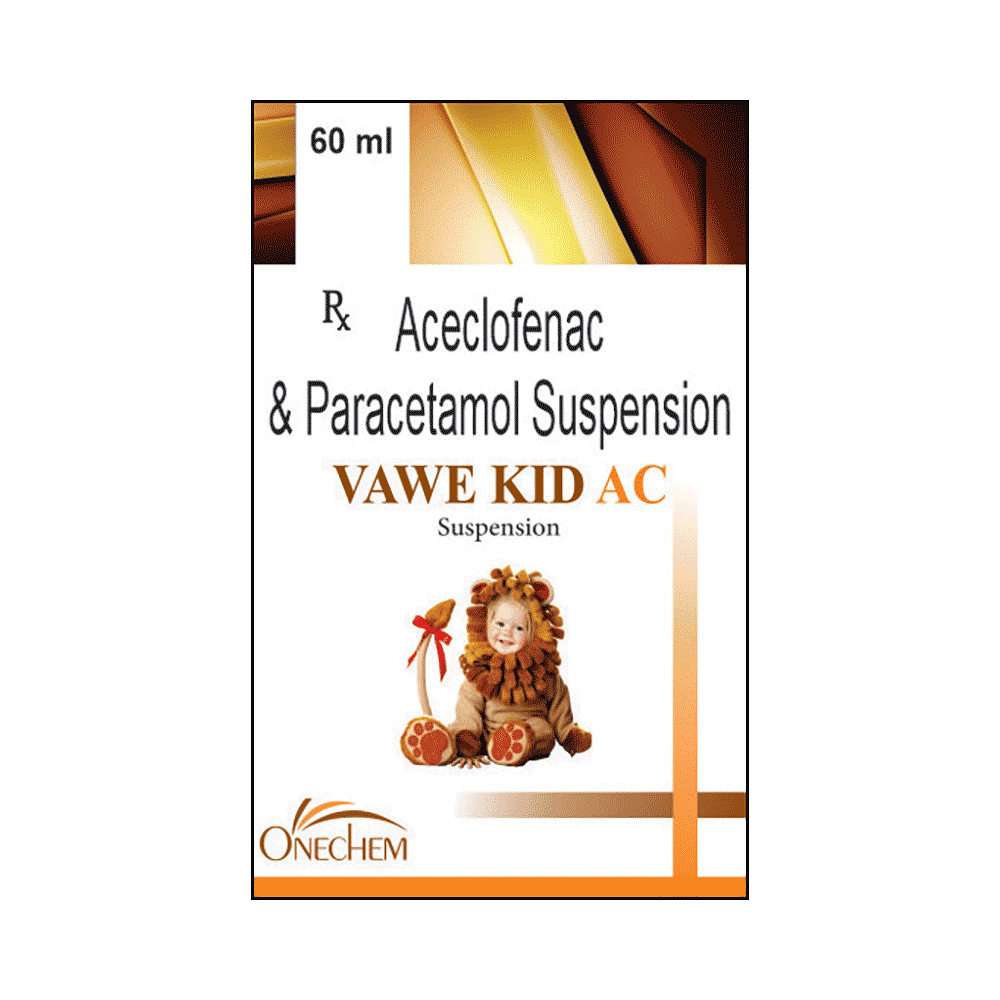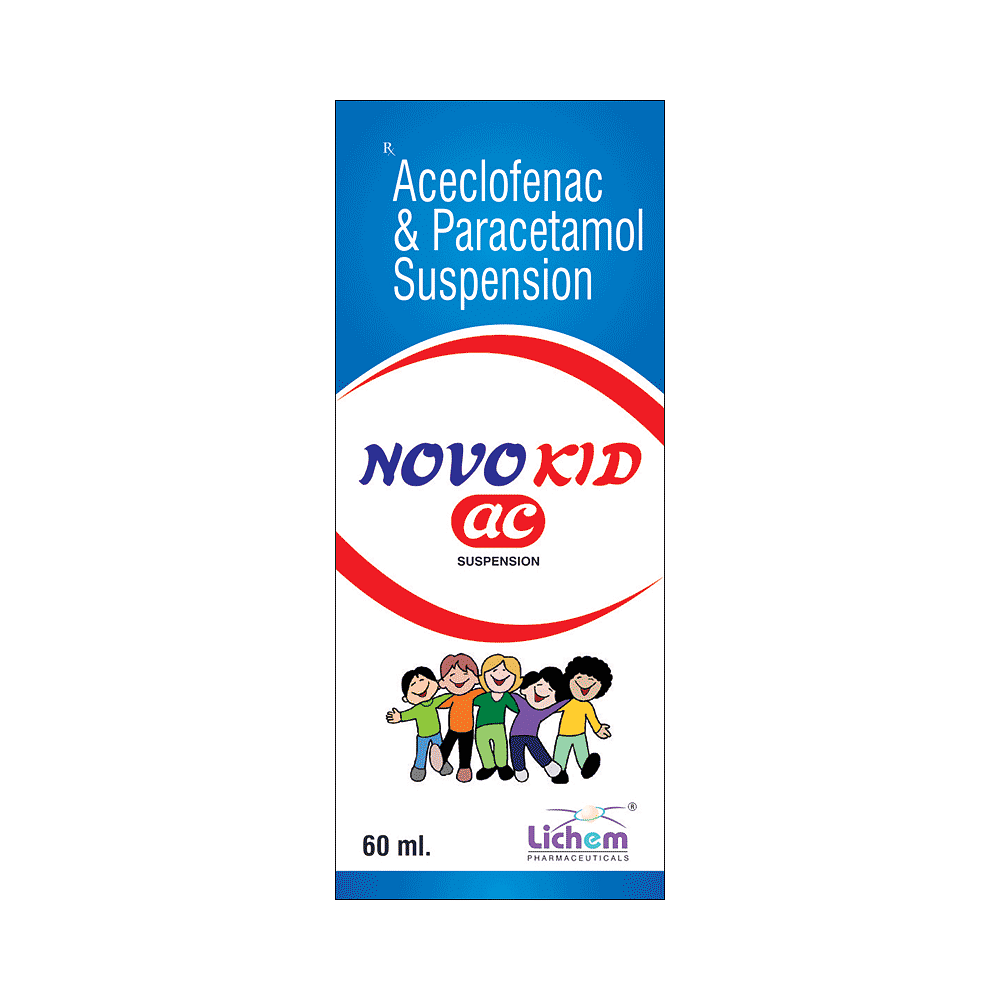
Alovac-P Oral Suspension
Manufacturer
Pharvax Biosciences
Salt Composition
Aceclofenac (50mg) + Paracetamol (125mg)
Key Information
Short Description
Alovac-P Oral Suspension helps lower body temperature (fever) and reduce pain and inflammation (redness and swelling) both in infants and children.
Dosage Form
Oral Suspension
Introduction
Alovac-P Oral Suspension is a medication that helps to lower body temperature (fever) and reduce pain and inflammation (redness and swelling) in infants and children. It is available in an oral suspension form and is used to treat various conditions such as fever, pain, and inflammation.
Directions for Use
Give this medicine after food to avoid abdominal discomfort in your child. Maintain a log of your child's temperature. If you do not see any improvement, contact your child's doctor for advice.
How it works
Alovac-P Oral Suspension comprises two active ingredients: Aceclofenac and Paracetamol. These medicines work by blocking the action of chemical messengers responsible for pain, fever, and inflammation.
Quick Tips
Give plenty of fluids to your child to ensure proper body hydration (water-levels) Give your child a balanced diet Encourage your child to have optimum sleep since sick children get tired soon and getting plenty of rest helps them recover faster Stop the medicine and consult your child's doctor in case your child exhibits allergic rash or stomach pain soon after taking this medicine
Related Medicines

Pureace-P Oral Suspension

Consace-P Oral Suspension

Siklonil-P Oral Suspension

Gesic Dee-P Oral Suspension

Vawe Kid AC Oral Suspension

Rapi Oral Suspension

Acewell P Oral Suspension

Ang Plus Oral Suspension

Novo AC Kid Oral Suspension

Xpace Oral Suspension
Frequently asked questions
Can I increase or decrease the dose of Alovac-P Oral Suspension for my child based on the severity of their illness?
No, it is not recommended to adjust the dosage of the medicine without consulting a doctor. While increasing the dose may lead to toxicity, decreasing it could worsen symptoms. Please speak with your child's healthcare provider if you notice a need for dose adjustment.
How much Alovac-P Oral Suspension should I give my child?
Your doctor will determine the dosage based on your child's condition and weight. Always adhere to the prescribed dosage schedule as it is the most reliable way to ensure safe and complete recovery for your child.
How should Alovac-P Oral Suspension be stored?
Alovac-P Oral Suspension should be kept at room temperature, in a dry place away from direct sunlight or heat. Always store medications out of reach and sight of children to prevent accidental intake.
Can all children receive the same dose of Alovac-P Oral Suspension?
No, dosage adjustments are crucial for every child based on their age and body weight. The doctor will determine the appropriate dosage of Alovac-P Oral Suspension considering your child's specific needs. It may change as your child grows older.
When will my child feel better?
While it usually takes a few days to weeks to see improvement, your child might not experience immediate relief. You need to give the medication for the duration prescribed by their doctor and keep following the instructions carefully. This approach is essential to reduce pain or fever while your child recovers.
Are there any serious side effects associated with this medicine for my child?
Alovac-P Oral Suspension is generally well tolerated by children, but if you observe severe symptoms such as persistent vomiting, swelling of body parts, changes in urination frequency, or a severe allergic reaction, please contact your doctor immediately.
Are there any specific contraindications related to using Alovac-P Oral Suspension?
It is crucial to avoid Alovac-P Oral Suspension for patients with known allergies to the medication's ingredients or excipients, as well as individuals allergic to other painkillers (NSAIDs). It is also advised to avoid its use in individuals with a history of stomach ulcers, active or recurrent bleeding from stomach ulcers, and individuals with heart failure, high blood pressure, liver or kidney disease.


